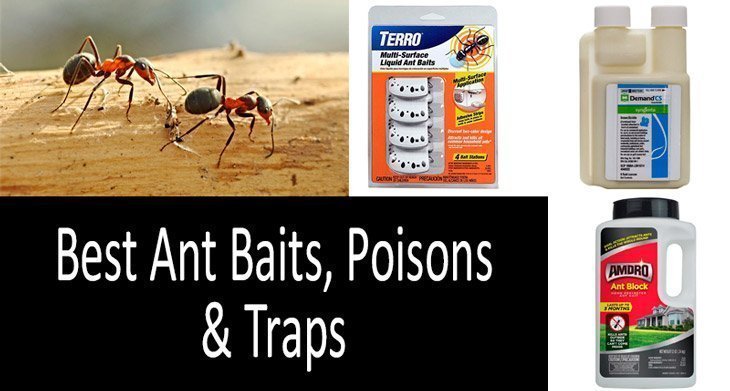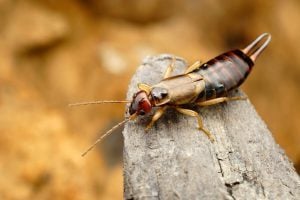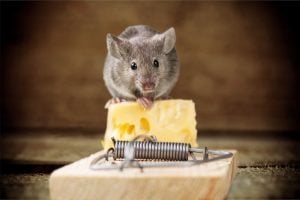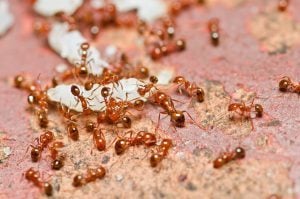What is the best ant bait? Actually, the slower the poison’s action, the better. Why? A forager that has come across the substance should have enough time to transfer it to the colony and share with others including the queen. As for the best products, choose one that come in a liquid formula as they do not dry out for a long period of time and work great both indoors and outdoors. Also, the number of bait stations in the pack also matters as you will need a lot of them to cover all suspected areas. In our assessment, Terro T334 ant baits meet these criteria best.
{top_pick title=”TOP PICK” amzn_assoc_asins=”B07DXB3BC2″ amzn_assoc_tag=”stoppestinfo0-20″ amazon_alt_img=”” amazon_alt_title=””}Why have we chosen it? The product’s active ingredient is Borax, a time-proven compound that works great on ants while its sweet liquid attractant remains effective for a long period of time. The poisoned insects do not die immediately, something that allows them to spread the substance among other members of the colony. The stations are very convenient to apply due to sticky strips that come with the product.{/top_pick}
This guide discusses TOP-11 best ant traps, baits, and poisons. You will learn about the main types of these products and the difference between various active ingredients as well as between gels, liquids and solid formulations. Read beneficial recommendations on how to use these poisons and where to place them. We have also examined scientific data on the effectiveness of various formulations to share the scientists’ conclusions with you.
Baits are the most important tool for ant control and “the only type of insecticide recommended in most situations”. In addition, this method is believed to be safer, especially for pets and kids, than spraying insecticides.
Another advantage lies in the possibility to reach the insects that you cannot see or find. They will come and do the whole job themselves. And finally, this solution will allow you to eradicate the entire colony, not just those foragers that have come into contact with an insecticide. The weak point of the method is that the insects will have to find the stuff, which is why you will have to do some research and discover the nest location.
Types Of Ant Poisons, Baits, And Traps
Various products have different formulations, active ingredients and types of packaging. Now, let’s have a brief look at their main distinctions.
Type of an Active Ingredient
Active ingredients in baits are different from those in sprays. While the latter ones are fast-acting and are generally used for spot and perimeter treatment, insecticides intended for baiting ants act slower so that the poisoned forager could have enough time to bring the stuff back to the nest. According to specialists from Colorado State University, the most commonly used and time-proved ones are Boric acid, Borax, and Arsenic Trioxide.
Another type includes insect growth regulators (IGRs), such as Hydramethylnon, that work by targeting the bug’s hormones, preventing new generations of insects from appearing. Fipronil, Dinotefuran, Indoxacarb are among the most popular ingredients for this type of baits.
Solid Baits Vs Liquids and Gels
However, it is not just ingredients that make the difference. Some bait stations include solid food mixtures and are known as ant traps while other solutions come in the form of gels. The former ones are more commonly used outdoors whereas the latter ones are good for indoor application.
Liquid solutions are sprayed around the nest or other locations where these bugs are active. Solid granular formulations are water-resistant and are designed to be placed in the garden or yard. Dusts are intended to be applied directly to crevices and other hard-to-reach areas with the help of a powder blower.
Gels and liquid-formulated baits are considered to be the most effective as they do not dry out for a long period of time. On top of that, some species, like carpenter ants simply are not attracted by solid baits and will feed only on liquid and gel-based ones. Liquids are poured into containers that can be further refilled or dropped on cards.
Type of Container
And finally, ant baits differ in the type of container. Refillable bait stations are more economical and effective than prepackaged ones. You can open and check a reusable station and refill it with fresh insecticide. So you will be sure that the liquid substance has not dried out.
A good option is a station with removable cups allowing you to place various types of baits at a time so that the bugs could choose the one they prefer.
Do not confuse baits with “bait traps,” which kill just foragers and will not affect other members of the colony.
What Ant Baits Are Effective?
Ant baits consist of two parts — attractants (oils, carbohydrates, and proteins) and poisons that are active ingredients of the stuff. The efficacy of each solution largely depends on how attractive the food in the station is. Which lure will be right for you depends on what species you are dealing with as various species have different preferences.
Barb Ogg from the University of Nebraska warns that not all ants can be controlled by baits. The list of those species that respond to the lures includes Argentine, odorous house, small honey, pavement, little black, pharaoh, big-headed ants, and some others. Carpenter ants may digest the bait but it will not be as effective as it is for other species.
So cornfield ants inhabiting human-occupied structures love everything sweet, pavement ants that can be found outdoors opt for greasy stuff. Argentine, odorous house, and small honey ants are known to feed on sweets while pharaoh ants favor Hydramethylnon baits. Fire ants enjoy eating oils.
The efficacy also depends on the season. Argentine ants are attracted to sweet baits on a year-round basis but will eat proteins only in the spring. But pharaoh ants consume protein and greasy stuff in every season.
The active ingredient is the substance that kills the bug. Such compounds as Hydramethylnon, Avermectin B, Fipronil, and Boric acid are considered to be effective.
You should not use granular solutions based on Cyfluthrin or Permethrin as they are fast-acting insecticides that will not allow enough time for the forager to spread the poison back among the colony. The same holds for Indoxacarb or Propoxur which, albeit being slow-acting, actually work too fast and, therefore, may not have the desired impact.
Michael F. Potter, an entomologist at the University of Kentucky, claims that products formulated as gels and the syringe-type solutions are the most effective and versatile.
How To Use Ant Poisons
To make baiting effective, you should follow a number of beneficial rules on using these poisons.
- Do not spray insecticides when using baits as they will repel or kill those foragers that are supposed to bring the poison to the nest.
- Remove all sweet liquids and food items, including their particles, or place them in tightly closed containers. The insects should not have any alternative sources, otherwise, they may ignore the lure.
- Place small portions of poison because it should be easy for the insect to carry.
- Monitor. If you see that the insects do not respond to the bait, change the product or add extra attractants.
- Check it on a daily basis. Once the poison is consumed, replace it. Otherwise, the insects will move somewhere else in search of food.
- Specialists from NC State University suggest leaving the poison in place for 3-4 days even after no more signs of feeding are observed.
- The most effective treatment is that made in the spring or late winter when new populations begin to grow.
- Put on gloves and a mask on the face when handling the insecticide, particularly the ones that come in the form of dust.
- Be patient. All these solutions are slow-acting and will not kill the bugs quickly.
Where Should You Put Your Ant Traps?
The wrong place is one of the biggest factors that influence the efficiency of one or another solution. Here are some tips on how to make the bait work.
- Place the baits in the areas where ant activity has been detected. When dealing with large colonies, you should better place them in several locations at a time.
- A good idea is to apply them directly to cracks and crevices, especially if ant activity has been detected in the area.
- Place baits indoors only if you are dealing with a severe infestation on the house. If it is not the case, the treatment should be limited to the area outside the house, otherwise, you will attract ants indoors. By placing them outdoors, you will drive the bugs out of the house.
- The best location outdoors is around the building’s foundation and nearby the nests, at a distance of about ten feet between the items.
How Does a Poison Eliminate a Colony?
The idea of baiting is not to kill an insect on contact but, instead, use it as a carrier delivering the poison to the rest of the colony. Bear in mind that all efforts will be futile unless you destroy the colony. And the main target here is the queen as she is capable of laying thousands of eggs on a daily basis. Keep in mind that some colonies may have several queens.
The ant is attracted by the food containing an insecticide, which is consumed, shared mouth to mouth with others and stored in the nest. Any inhabitant of the nest can ingest the substance brought with the forager, including the larvae and the queen.
How long does it take to kill an ant colony? Depending on the severity of the infestation, season, and the type of product, the whole process can take from 2-3 days to several weeks. Each bug that digests the poison will die within a day or two because we’re talking about slow-acting, larger spreading solutions.
Experts at Texas A&M AgriLife Extension point out that ants typically form a new colony indoors when a female mates. The queen finds a nesting site, lays eggs and feeds the larvae. Once they develop into mature insects, she does not have to take care of her brood any more.
Also, the already established colony can move inside the building in case of unfavorable weather conditions, when it is too humid or too hot. Ant colonies move from one site to another quite often and do it mostly at night.
TOP-10 Best Ant Baits
Below, you will find a variety of ant baits that come in different formulations, from liquids, and baits to granules and powders. Their price ranges from $5 to $50, however, some pricier items are actually cost-effective as one package can include several stations or tubes.
Best Organic Borax-Based Ant Baits | Terro
The active ingredient in these solutions is Borax, a time-proven compound that works great for ants. The substance kills the ants slowly, allowing them to bring it to the nest and share with the others in the colony. On average, it takes several weeks to eradicate the entire colony using this bait.
I would recommend Terro T334 to anyone who has faced an ant infestation in the house. The liquid formulation is particularly effective when used indoors and lasts for a longer period of time.
Another advantage is that it is a good buy. For some $30, you get five packs each containing 4 bait stations. Twenty items will be enough to distribute all over the house, covering all suspected areas.
There is another reason to opt for this product when dealing with an ant issue indoors. It’s convenience. The stations will suit any interior thanks to their two-color design. Adhesive strips included in the pack allow to attach the item to any surface, be it on the wall or under the furniture item.
{code 675}
Another product from this manufacturer, TERRO T300B, is also based on Borax and comes in the form of liquid. These are sealed stations with a new snap-off tab, which allows for keeping the poison fresh for a longer period of time. An elongated shape makes it convenient to place along the baseboards and walls.
{code 676}
Best Ant Dust | TERRO T600
Unlike the previous products, this one kills a forager on contact and is not intended to be spread among the other members of the colony. Therefore, its effect is limited, albeit with a long residue lasting up to 8 months.
Still, this item has other advantages. So you may sprinkle the dust not only indoors but also outdoors as the solution is waterproof and will be effective even after the rain. It is based on Deltamethrin which is a fast-acting pyrethroid insecticide.
This dust should be applied at temperatures ranging from 65 to 80°F in the amount of 0.5 pounds of the stuff per 1,000 square feet. You will see the results within four days but if this does not happen, re-apply the dust.
{code 677}
Best Strongest Indoor Ant Bait Gels
Placing gels is ones of the best ways to control these pests indoors as they can be applied almost anywhere including hard-to-reach areas. Apart from that, the formulation itself has proved to be effective, allowing the ants to easily carry the poison back to the nest. Now, let’s take a look at the most popular products in this category.
Syngenta Optigard Gel that includes four 1-ounce tubes with a plunger will cost you about $30. The solution based on Thiamethoxam controls a wide range of ant species and is easily transferred throughout the colony. However, it will not work against pharaoh, fire, and harvester ants.
The efficiency of this chemical compound has been scientifically confirmed. A study conducted by specialists from Purdue University Department of Entomology has shown that “hydrogels saturated with a small amount of the chemical Thiamethoxam dissolved in sugar water reduced the Argentine ant population in an orchard by about 94% in two weeks”. Placing hydrogels nearby a colony makes the ants go crazy. As entomologist Grzegorz Buczkowski put it, “It’s like a big party.”
{code 678}
Dupont Advion Ant Gel Bait comes in the same amount and at a similar price. So what is the difference? The solution is based on Indoxacarb, an active ingredient developed by DuPont for pest control. It also is also recommended for situations where insects that have developed resistance to other insecticides, including pyrethroids.
Advion has an advantage over Optigard in that it controls a wider range of species including fire and pharaoh ants. Apply the solution to cracks, crevices, along the walls and behind electric appliances. The downside of Indoxacarb is that it works too fast and a forager may not have enough time to transfer the poison to the colony.
{code 679}
Best Outdoor Ant Baits
Products designed for outdoor use should be weather-resistant so that neither the wind nor rain could affect their efficiency.
Terro 1806 Outdoor Liquid Baits helps eliminate large infestations in the yard. When placing the item directly on the soil, use stakes that come with the product. The stations are pre-filled with liquid bait based on Permethrin and ready-to-use. They are waterproof and will not dry out quickly. What I like about these items is that they are really large, containing 0.75 ounces of bait. Also, you will not have to change it often — just every 3 months.
{code 680}
Terro T1812 Outdoor Liquid Bait Stakes are more convenient to install in loose ground. They are also waterproof and ready-to-use but are more stable and compact. Tiered bait pack allows to increase the consumption of bait and minimize waste. The main advantage of this product is its active ingredient, Borax, which has proved to be effective against ants.
However, in comparison with the previous item, this one is smaller, with the volume of just 0.25 oz. There is a special opening to make it easier to check the amount of the substance left.
{code 681}
Perimeter Ant Bait Granules | AMDRO
This 12-ounce canister with poisonous granules would be a great choice for treating the house perimeter. For about $10-$15, you will get a solution controlling over 20 ant species outdoors. According to the manufacturer, the product ensures protection for up to 3 months and covers over 500 feet.
The active ingredient is Hydramethylnon which is especially favored by pharaoh ants. It works slowly, eliminating the colony and its queen within two weeks. The downside is that the stuff is not waterproof and becomes less effective in the wet soil. In addition, the solution is not meant for applying to vegetable gardens or around pets.
{code 682}
Cost-Saving Ant Killer | Terro
The main strong point here is convenience. The product comes in a 3-pound shaker bag which does not require a spreader for application.
Keep in mind that these granules can be used outdoors only and are suggested to be applied to the areas around the perimeter of your home (2 pounds per 1,000 square feet) or where the bugs activity has been detected. The solution would be a good choice for treating ant mounds. For this purpose, you will need half a cup of the insecticide per each mound.
The problem with this stuff is that it is relatively fast-acting and the insects that have consumed the fill will die within a day. So it may happen that a forager will die before it could spread the poison among the colony. The product contains Lambda-cyhalothrin, an organic compound that is known to have a long-lasting effect in pest control.
Best Professional Insecticide | Syngenta Demand CS
This is the best option for those who need to treat a large area as one bottle of this concentrate makes up to 40 gallons of ready-to-use solution. Based on Lambda-cyhalothrin, the product can be applied both inside and outside the house.
What is special about this product is that it was developed with the use of micro-encapsulated technology. These are microcapsules that have been designed so that an insect can easily pick them up when traveling across the treated area. Then they carry the stuff to the nest and share it with others.
The capsules come in different size so that they could suit almost any insects. By the way, this insecticide controls about 30 species of pests including ants. Moreover, smaller capsules work as a fast-acting insecticide, releasing Lambda-cyhalothrin immediately after application while the larger ones do it later, ensuring a long residue amounting up to 3 months.
{code 683}
Best Ant Trap | Terro T3206
You may just trap foragers without eradicating a colony. This method is good for small ant issues or in cases when the colony is established outdoors and the bugs penetrate into the house just searching for food. Placing baits means attracting new insects to the house, something that is not sensible when you see just a handful of occasional ants.
This product has a benefit of being non-toxic and safe for pets and kids. That said, the sticky trap captures a variety of insects including ants and roaches. A package contains four traps with stick surfaces where the bugs will be stuck and stay until they die. The best location is around the perimeter of rooms, in the corners, and behind furniture items.
{code 684}
Comparison Chart of Ant Bait Effectiveness
Effectiveness scale:1 being least, and 10 being the most effective.
| Product | Features |
| Terro T334 | Active Ingredient: Borax Type: Liquid 5 packs with 4 stations in each Two-color design Adhesive strips included Effectiveness: 10 |
| TERRO T300B | Active Ingredient: Borax Type: Liquid 2 packs with 6 stations in each New snap-off tab Elongated shape Effectiveness: 9 |
| TERRO T600 | Active Ingredient: Deltamethrin Type: Dust Waterproof Residual lasts up to 8 months Convenient shaker can Effectiveness: 8 |
| Syngenta Optigard | Active Ingredient: Thiamethoxam Type: Gel Four 1-ounce tubes with a plunger Scientifically tested Effectiveness: 9 |
| Dupont Advion Ant Gel Bait | Active Ingredient: Indoxacarb Type: Gel Four 1-ounce tubes with a plunger Controls a wide range of species Effectiveness: 10 |
| Terro 1806 | Active Ingredient: Permethrin Type: Liquid Six 1-ounce pre-filled stations Waterproof Contains 0.75 oz of bait. Effectiveness: 9 |
| Terro T1812 | Active Ingredient: Borax Type: Liquid Eight stakes Waterproof Contains 0.25 oz of bait. Effectiveness: 10 |
| AMDRO | Active Ingredient: Hydramethylnon Type: Granular Perimeter treatment Lasts for 3 months Effectiveness: 8 |
| Terro Ant Killer Plus | Active Ingredient: Lambda-cyhalothrin Type: Granular Perimeter and spot treatment 3-pound shaker bag Fast-acting solution Effectiveness: 9 |
| Syngenta Demand CS | Active Ingredient: Lambda-cyhalothrin Micro-encapsulated technology Type: Liquid Each bottle makes up to 40 gallons of ready-to-use solutions Lasts up to 90 days Effectiveness: 10 |
| Terro T3206 | Insects die on a sticky surface Type: Trap One pack contains 4 ant traps Dimensions: 0.2 x 0.2 x 12.2 in Effectiveness: 7 |
What to Look for When Buying an Ant Bait
Now, let’s have a look at what things you should consider when buying an ant poison.
Ant Species. This is the first thing to determine your choice. As we have mentioned above, different species prefer different attractants. Carpenter ants opt for protein-rich food while Argentine and odorous house ants like sweets.
Indoors/Outdoors. Granular products should be placed outdoors, powders are intended to be applied directly to the crevices and cracks in the wall while gels and liquids work best indoors. That is why you should select the solution based on the level of infestation and the colony location.
Speaking in terms of active ingredients, Boric acid can be used indoors only, Arsenic Trioxide and Avermectin B1 are intended for application inside and outside the house. Abamectin B can be applied to crevices indoors and around the building’s perimeter outdoors.
Safety. If you have pets and small kids, you should choose an option where the toxic substance is concealed inside the station.
Combination of various baits. Actually, you never know for sure which option will attract your ants the most. That is why offering them a choice would be wise.
Shelf Life. To be effective, the ingredients need to be fresh. These products have a limited shelf life because the attractants they contain tend to spoil over a short period of time, losing their attractiveness. So check the expiration date before buying a product.
Price. You will need multiple baits to place them in different locations. Moreover, will have to replace them when the substance is consumed by bugs. Since the quantity affects the overall price, the price for one item should not be high. Bear in mind that reusable stations turn out to be cost-efficient in the long run.
How To Make Your Own Ant Traps
You may make an ant trap yourself using products that are generally available in the kitchen. Although the trap will not be as effective as a commercial solution, this will help you save money.
Solution #1. Mix one teaspoon of Boric acid with a quarter cup of corn syrup. Stir the mixture thoroughly. Place several drops on a paper or directly on the surface where the bugs’ activity was observed.
If you accidentally see a forager feeding on the solution, do not kill it! Do not forget to place fresh drops every day over the course of two weeks. And make sure that the solution is not available to pets and kids as it is toxic to mammals as well.
Solution #2. If you need to attract grease-loving species, try this solution. Mix one tablespoon of Borax with the same amount of powdered sugar. Add one teaspoon of lard or shortening to the mixture. Place the solution on a paper or directly on the surface where the bugs travel. Replace it daily within two weeks.
Solution #3. This is natural and safest but the least effective option because you will not eliminate the colony using this method. Buy a package of food-grade diatomaceous earth and sprinkle the dust where these insects have been noticed. Pay attention to places around the doors and window as well as inside the cabinets.
How Can I Prevent Ant Infestations?
Good thinking! Indeed, it is easier to prevent ants from penetrating into your house than waste energy and money on treating it with insecticides. Let’s have a look at a plan of action offered by scientists from the University of California.
Step #1. Caulk all points of entry that can be potentially used by the insects to get inside the building, focusing on the areas around pipes, sinks, power outlets, and baseboards. Use silicone-based products to seal cracks. Or Acrylic/Latex caulk for a paintable surface.
Step #2. Clean food preparation areas with soapy water every time after using them.
Step #3. Do clean-up regularly, mopping the floor, vacuuming carpets, and draining sinks.
Step #4. Empty garbage cans or tightly seal it before nightfall.
Step #5. Place food items in a refrigerator or container. Keep in mind that a cardboard box is not an obstacle for ants.
Step #6. Create an insecticidal barrier around the house using sprays. This will stop the bugs from entering the house.
Step #7. Remove dense vegetation growing close to the house. Trim shrubs and trees.
Step #8. Unclog rain gutters as this is the place where these insects often establish their nests.
Step #9. Firewoods should be stored away from the building.
Step #10. Regularly monitor the house, looking for possible nesting sites. Check potted plants and other items brought in the house.
FAQ
Do ant baits even work?
Of course. They are considered to be the most effective way to deal with the established infestation and eradicate the entire colony. However, it is important to place the right attractant and place the stuff in the right location.
Are ant baits safe around cats and dogs?
Only when placed inside a bait station. Bear in mind that you are dealing with toxic substances.
What’s the difference between an ant poison and ant repellent?
They are complete opposites. Poisons should attract an insect to kill it while repellents are meant just to keep bugs away from the treated site. And these methods should never be used simultaneously.
{code 685}

















